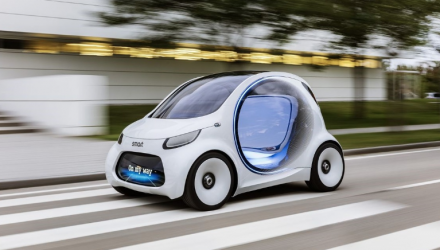Currently, electric vehicles represent a small percentage of new automobiles sold around the world and cars on the road, but that percentage is expected to increase in a big way over the next several years.
To access this quickly developing market, investors have a number of electric vehicle-specific ETF options to choose from, including the KraneShares Electric Vehicles and Future Mobility ETF (NYSEArca: KARS), Global X Autonomous & Electric Vehicles ETF (NasdaqGM: DRIV) and Innovation Shares NextGen Vehicles & Technology ETF (NYSEArca: EKAR).
“The International Energy Agency’s (IEA) new Global Electric Vehicles Outlook projects global EV sales to hit 22 million by 2030, under its new policies scenario, which assumes no policy changes. That would bring the total number of EVs on the road in the world to 130 million,” reports Mining.com.
DRIV debuted just over a year ago and tracks the Solactive Autonomous & Electric Vehicles Index. Component companies include firms “involved in the development of autonomous vehicle software and hardware, as well as companies that produce EVs, EV components such as lithium batteries, and critical EV materials such as lithium and cobalt,” according to Global X.
Encouraging Signs
Electric vehicles are in the early innings of development and there are signs that there is a lot of pent up demand among consumers whom want to embrace the technology. In 2017, electric vehicle sales represented 1.7% of all vehicle sales globally, exceeding 1 million for the first time and rising 51% year-over-year. The rate could continue to accelerate as a result of EVs becoming more economical than gas-powered cars and as a result of a pro-climate regulatory changes pushing to ban gas-powered cars.
“There are currently more than 1 billion vehicles in the world, so if the IEA’s projections hold true, that means that 10% to 20% of the world’s vehicles could be electric by 2030,” reports Mining.com.
EKAR tries to reflect the performance of the Innovation Labs Next Generation Vehicles Index, which is comprised of companies engaged in the development of “New Energy Vehicles,” such as vehicles propelled by one or more electric motors powered by rechargeable battery packs, or “Autonomously Driven Vehicles,” such as vehicles capable of driving themselves from a starting point to a predetermined destination in “autopilot” mode using various in-vehicle technologies and sensor.
“Under a more aggressive EV@30 policy scenario, which would include enhanced government policies and incentives, total EVs globally could be as high as 210 million electric cars, or 250 million electric vehicles, counting e-buses and other electric vehicles,” according to Mining.com.
For more information on the car industry, visit our automobiles category.

